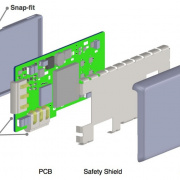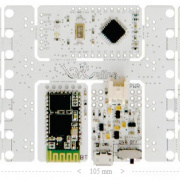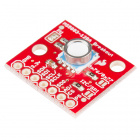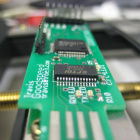CTaylor
Member Since: May 29, 2007
Country: United States
The word "hacker" is often abused in the DIY community. In this post we talk about traditional grey-hat hacking in relation to hardware and DIY electronics.
SparkFun's first attempt at creating an inexpensive, accessible, DIY assistive technology mouse.
The Ara Modular Smartphone Developers Conference was on April 15-16. We were there. This is what we learned.
Hardware Hacking is an art, but there are some common methods to modifying devices that can jump-start any good hacking project.
Today we have a post from SparkFun Engineer Chris Taylor on "Self Taught Electronics."
FPGAs are ubiquitous in "traditional" engineering, but still have only a small stake in DIY culture. Here are a couple of projects that are changing that.
We tore apart a Neato Robotics XV-11 robotic vacuum cleaner and did a little reverse engineering.
Bigger prizes and some rule clarifications for the Antimov Competition coming in October.
Voltage, Current, Resistance, and Ohm's Law
February 6, 2013
Learn about Ohm's Law, one of the most fundamental equations in all electrical engineering.
-
Nice catch. Fixed. Thanks!
-
On its way!
-
They are absolutely providing for reconfiguring. That's one of the main features of the phone.
The goal is to make everything hot-swappable. Even the battery! They stated that you'll be able to swap out the battery without turning off the phone. They didn't say how, but I'm assuming some sort of high-capacity cap that can run the main controller for a short period of time. As for the other modules, the drivers for most of those should be identical, with the applications taking care of the details for each module.
The example they used was having one configuration for work and one for play. You come home from work and you're going out for the night. You can remove the bluetooth module and replace it with a camera, and remove the wifi module and replace it with another battery module for extra power (the power system allows the user to have as many batteries as they want).
-
Fixed. Thanks!
-
Stay tuned...
-
The only change is the silk on the back. Otherwise it is identical to the Arduino Pro Mini 328.
-
This could certainly be done with an Arduino + Ethernet Shield, but the RPi is a much cheaper solution.
-
Thanks for the heads up! I still want it to be the old URL. If only I could get ahold of Dan...
-
I would consider this the extreme example of case-modding. I've certainly gutted my fair share of toys to make them do something strange and/or terrible.
-
Theoretically, that's the way to calculate it. The way I actually did it was the empirical (read: lazy) way. Cheap, off-the-shelf products like the LEDs I had don't often exhibit proper theoretical behavior, so I just plugged the system into a bench power supply and turned the LEDs down until the current was lower, but the difference in brightness was negligible. That current happened to be 6.5A, so that's what I used for the rest of the calculations.





















